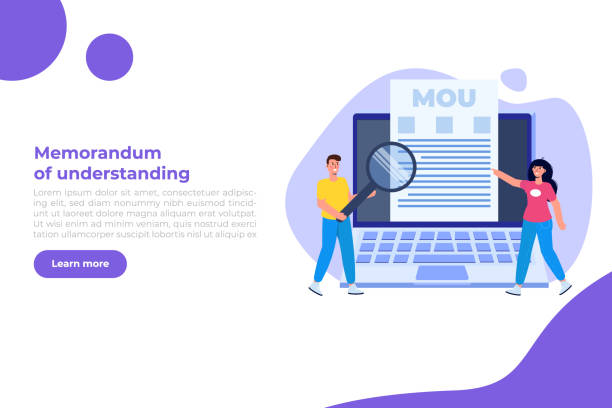An Introduction to the Importance of Multilingual Website Design in Today’s World
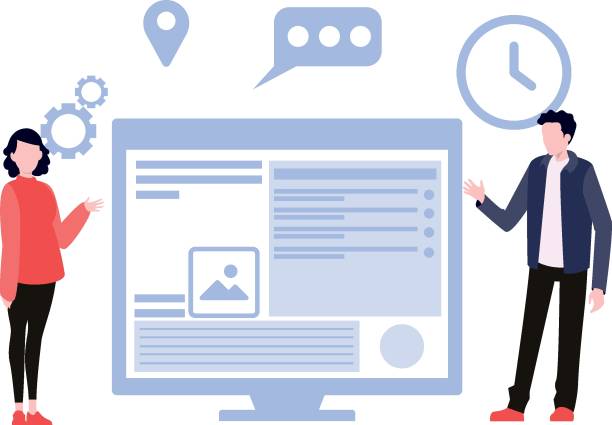
In the era of #Global_Communication and #Digitalization, geographical boundaries in the business world have faded.
It’s no longer enough to merely have a website for an online presence; instead, you need a website that can communicate with audiences from all over the world.
This is where the concept of multilingual website design gains special importance.
A multilingual website allows you to offer your products and services in a language that is native and more comfortable for the audience.
This approach not only increases the trust of potential customers but also provides new opportunities for market expansion and penetration into #Global_Markets.
This section explains the general topic and why such an approach is needed in multilingual platform development.
On the other hand, #Accessibility and #Inclusivity are also prominent benefits of this strategy, as users in different parts of the world can access the information they need in their native language, which significantly helps increase conversion rates and reduce bounce rates.
Success in international markets requires a deep understanding of the linguistic and cultural needs and preferences of the audience, and multilingual website design is considered the first and fundamental step in this direction.
Are you dissatisfied with the low sales of your online store?
RasawWeb is your solution for a professional and high-selling online store.
✅ Significant increase in sales and revenue
✅ Easy and pleasant shopping experience for customers
⚡ Get a free consultation from RasawWeb now!
Advantages and Challenges of Implementing a Multilingual Website
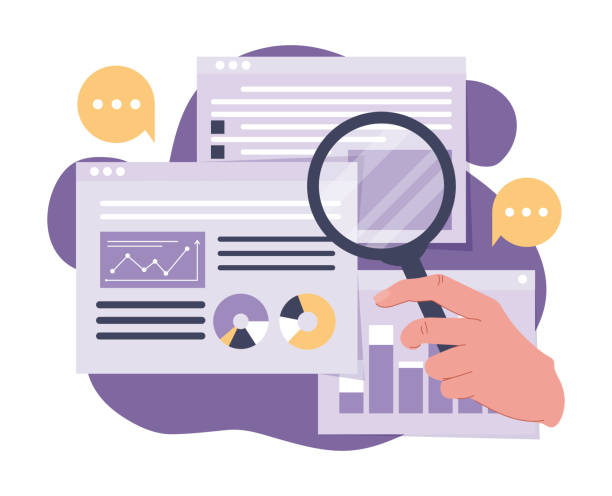
Implementing a multilingual website design comes with a set of significant advantages and, of course, its own specific challenges.
Key advantages include expanding access to global markets, improving international SEO (increasing search engine rankings for different languages), enhancing credibility and trust among local users, and ultimately, increasing conversion rates.
When a user finds content in their native language, their likelihood of purchasing or interacting with the website significantly increases.
This section analytically examines these advantages as well as the technical and non-technical challenges ahead.
Challenges include managing high-quality translation and maintaining content consistency across all languages, technical SEO issues such as correct use of the hreflang tag and appropriate URL structure, and user experience (UX) issues like language selection and UI design for supporting Right-to-Left (RTL) languages.
Furthermore, maintaining and updating content across all language versions requires a #Robust_Content_Management_System and precise translation and validation processes.
Understanding these challenges before starting a multilingual website design project is crucial for long-term success.
Technical Approaches in Multilingual Website Design and URL Architecture

When designing a multilingual website, choosing the appropriate URL architecture is one of the key technical decisions that profoundly impacts SEO and user experience.
Three main approaches include using subdomains, subdirectories, and country code Top-Level Domains (ccTLDs).
Each of these methods has its own advantages and disadvantages.
For instance, ccTLDs like .de or .fr perform very strongly for geographical targeting, but managing multiple domains can be complex and costly.
Subdirectories (e.g., example.com/fr/) are often preferred for SEO due to the transfer of authority from the main domain to them, and they are relatively easier to manage.
Subdomains (e.g., fr.example.com) are another option that search engines consider as separate entities.
Alongside URL architecture, the correct use of the hreflang tag is very important.
This tag tells search engines which version of a page is suitable for which language and geographical region, helping to prevent duplicate content issues.
This is a specialized aspect of multilingual website design that requires high precision.
Also, attention should be paid to choosing a #Content_Management_System (CMS) that fully supports multilingual capabilities.
Many modern CMSs like WordPress with specific plugins, or Drupal and Joomla, inherently provide the capability for multilingual content management.
| Approach | URL Example | Advantages | Disadvantages |
|---|---|---|---|
| Subdirectory | example.com/en/ | SEO-friendly, easier management, main domain authority transfer | May be less clear to users |
| Subdomain | en.example.com | Good separation, possibility for separate hosting | May contribute less to the main domain from an SEO perspective |
| Country Code Domains (ccTLD) | example.fr | Strong geographical targeting, high local trust | Cost and complexity of managing multiple domains |
SEO Strategies for Multilingual Websites
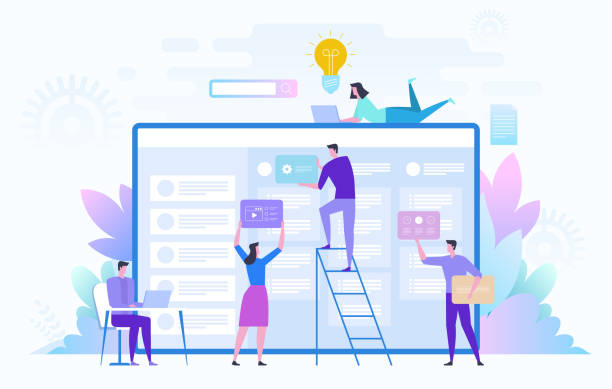
Search Engine Optimization (SEO) for a multilingual website comes with specific complexities that require careful planning.
Merely translating content into other languages is not enough; the translated content must be optimized for keywords relevant to each language and geographical region.
This means that #Keyword_Research must be conducted separately for each language, as popular keywords and search terms may differ across various cultures and languages.
This section provides a comprehensive guide to international SEO.
In addition to choosing the appropriate URL architecture and using the hreflang tag, as previously mentioned, other #Geographical_Signals should also be considered.
For example, the website’s #Hosting_Server can be located in the country whose language you are targeting.
Google Search Console also provides tools for setting international targeting.
Local language link building is also an important factor.
Inbound links from reputable and relevant websites in the same language and geographical region can help with the #Domain_Authority and SEO ranking of that language version.
Ensuring website loading speed in all target geographical regions is also very important, as site speed is one of Google’s ranking factors and also impacts user experience.
All these points are requirements for an SEO-optimized multilingual website design.
Did you know that 85% of customers check your company’s website before any interaction?
With RasawWeb, build a corporate website worthy of your reputation.
✅ Increase customer credibility and trust
✅ Attract high-quality leads
⚡ Get free website design consultation
Managing and Producing Quality Multilingual Content
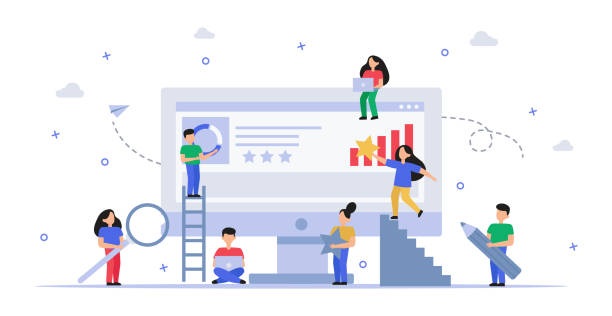
One of the most important pillars of success in multilingual website design is the #Production_and_Management_of_Quality_Content tailored to each language’s culture.
Mere word-for-word translation is not enough; content must be “localized,” meaning it should be adapted not only to be linguistically correct but also culturally appropriate, including local idioms and even humor, to resonate with the target audience.
This section educates on important points in this area.
Using native translators who are familiar with the culture and linguistic nuances is crucially important.
Machine translation tools can be a useful starting point, but they can never replace human accuracy and understanding, especially for sensitive or #Marketing_Content.
An #Efficient_Workflow for translation management is essential.
This includes planning, translation, review, editing, and publication stages.
Also, it should be noted that some phrases or concepts may have a specific meaning in one culture and a different meaning in another.
For example, colors, symbols, and images should also be carefully chosen to convey the correct message and not be inadvertently offensive.
A strong multicultural web architecture should provide an infrastructure that allows for easy content updates in all languages and prevents information fragmentation.
The Importance of User Experience (UX) in Multilingual Website Design
![]()
User experience (UX) plays a pivotal role in multilingual website design.
A website with great content but poor UX quickly loses its users.
#User_Interface_Design (UI) should be such that language selection and switching are simple and intuitive.
Typically, a button or dropdown menu in the website’s header or footer is provided for this purpose.
Also, attention should be paid to text direction (e.g., Right-to-Left for Persian and Arabic, or Left-to-Right for English) and page element layout in each language.
This section elaborates on the importance of UX and how to implement it.
Furthermore, page loading speed should be optimized for each language version, as users in different regions may use varying internet connections.
Fonts, text size, and readability should also be adapted for each language.
For example, some English fonts may not be suitable for Eastern languages and vice versa.
Ensuring that all forms, buttons, and error messages are correctly translated and localized is essential for maintaining a consistent user experience.
Successful multilingual portal design requires a deep understanding of user needs and expectations in each geographical region.
Useful Tools and Platforms for Multilingual Website Design
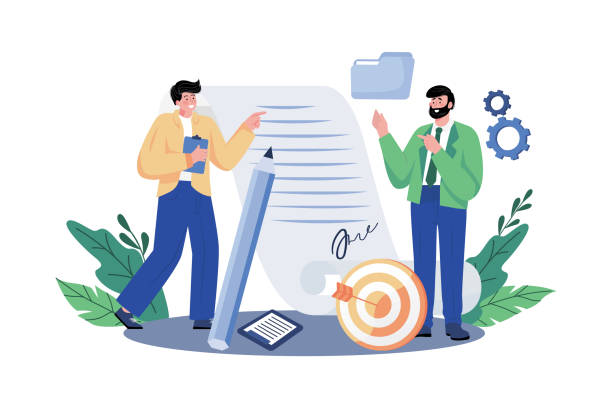
Choosing the right tools and platforms for multilingual website design can either facilitate or complicate the process.
Content Management Systems (CMS) like WordPress, Drupal, and Joomla all have multilingual capabilities either built-in or through plugins.
WordPress, with plugins like WPML or Polylang, provides easy multilingual content management.
Due to its flexible structure, Drupal is a popular choice for larger and more complex projects requiring deep localization.
This section specializes in introducing and comparing these tools.
In addition to CMS, using Translation Management Systems (TMS) can be very effective in organizing and automating the translation process.
These tools help manage glossaries, translation memories, and translation workflows, allowing teams to collaborate more effectively with translators and editors.
Other important tools include international SEO analysis tools and language testing tools to ensure the website functions correctly in various languages.
The correct selection of these tools is the foundation of a strong and efficient international website structure.
| Tool Category | Examples | Main Use |
|---|---|---|
| CMS with Multilingual Capability | WordPress (WPML, Polylang), Drupal, Joomla | Building and managing website structure and content in different languages |
| Translation Management System (TMS) | MemoQ, SDL Trados, Smartcat | Optimizing translation process, managing translation memory and glossary |
| International SEO Tools | Google Search Console, Ahrefs, SEMrush | Keyword research for different languages, monitoring SEO performance |
Continuous Maintenance and Updates for a Multilingual Website
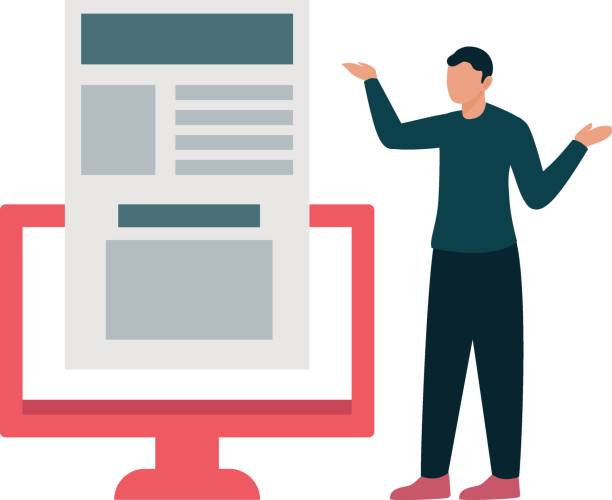
Multilingual website design is not just an initial phase; instead, it requires continuous maintenance and updates to remain relevant, accurate, and efficient.
Content becomes outdated, SEO rules change, and user needs evolve.
Therefore, an active maintenance strategy for all language versions of the website is essential.
This news and guide section includes key tips to ensure the long-term sustainability and success of your website.
One of the most important aspects is #Content_Updates.
Not only should new content be translated into all languages, but existing content should also be regularly reviewed and updated to ensure its accuracy and relevance.
Monitoring SEO performance across all languages is also crucial.
This includes tracking keyword rankings, organic traffic, and conversion rates for each language version.
User feedback should also be carefully collected and analyzed to identify and resolve potential issues in translation, user experience, or technical aspects of the website.
Furthermore, with technological advancements and the emergence of new trends in translation and localization, such as using artificial intelligence for translation, one must always be prepared to adapt and leverage these technologies.
Do you dream of a thriving online store but don’t know where to start?
RasawWeb is your comprehensive e-commerce website design solution.
✅ Attractive and user-friendly design
✅ Increase sales and revenue⚡ Get a free consultation
Case Studies and Success Stories in Multilingual Platform Development
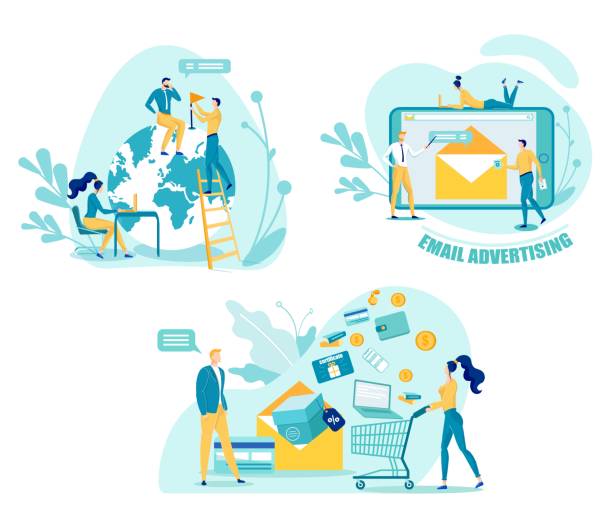
Studying successful cases can be inspiring and show us the best practices in multilingual platform development.
Many global brands, through intelligent multilingual website design, have been able to penetrate new markets and gain the loyalty of international customers.
For example, major technology and e-commerce companies, such as Airbnb or Amazon, are prime examples of multilingual websites that, through deep localization, have managed to provide a seamless and successful user experience worldwide.
This section entertainingly yet analytically delves into some of these success stories.
These companies not only translate their content but also pay special attention to cultural details, local payment methods, and even customer support in native languages.
This level of localization goes beyond simple translation and involves a deep understanding of the #Specific_Needs_of_Each_Market.
The results of these investments are clearly seen in revenue growth, increased market share, and increased customer satisfaction globally.
These stories show that multilingual website design, when executed correctly, can be a powerful lever for business growth and development.
The Future of Multilingual Website Design and Emerging Trends

The future of multilingual website design is full of innovation and change.
With significant advancements in #Artificial_Intelligence (AI) and Machine Learning, we will witness improved machine translation quality and the delivery of more personalized user experiences.
This section analytically and provocatively examines future trends.
Will AI ever completely replace human translators? Probably not entirely, but it will certainly become a powerful tool for increasing the speed and efficiency of the translation process.
Other trends include the increasing #Importance_of_Multilingual_Voice_Search and #Virtual_and_Augmented_Reality (VR/AR).
How should websites and platforms prepare themselves for these emerging technologies to be able to deliver content in different languages within these environments? Additionally, with the expansion of the internet in less developed regions, the need for supporting more and more indigenous languages will be felt.
Real-time content personalization based on user language and culture is another important trend that can elevate user experience to an unprecedented level.
Multilingual website design is not just a current requirement, but an investment for the future of digital presence on a global scale.
Frequently Asked Questions
| Question | Answer |
|---|---|
| 1. What is multilingual website design? | The process of creating a website whose content is available in multiple different languages so that users from all over the world can interact with the site in their own language. |
| 2. Why should we make our site multilingual? | To expand the market, attract international audiences, improve SEO in global search results, and enhance brand credibility and professionalism. |
| 3. What are the methods for implementing a multilingual site? | Using subdomains (e.g., fa.example.com), subdirectories (e.g., example.com/fa/), URL parameters (e.g., example.com?lang=fa), or country-code top-level domains (e.g., .ir, .de). |
| 4. Is multilingual site SEO different? | Yes, it requires international SEO strategies such as using the hreflang tag, appropriate URL structure for each language, and keyword research for each language. |
| 5. What points should be considered when choosing languages? | Language selection should be based on the target market, audience demographics, and current website traffic analysis data. |
| 6. What are the common problems in multilingual website design? | Issues related to SEO, translation quality, content management, Right-to-Left (RTL) and Left-to-Right (LTR) support, and user experience. |
| 7. What is the role of CMS in multilingual sites? | Modern Content Management Systems (CMS) (such as WordPress with multilingual plugins or Drupal) offer built-in features or powerful plugins for easy content management in multiple languages. |
| 8. How should content translation be done? | Translation should be done by native and professional translators, not just machine translation, to ensure local tone, culture, and idioms are respected. |
| 9. How is language switching done on multilingual sites? | Typically, a Language Switcher in the site’s header or footer is used, allowing users to easily select their desired language. |
| 10. Is responsive design important for a multilingual site? | Yes, responsive design ensures that the site is displayed correctly on any device (mobile, tablet, desktop), which is crucial for international user access and SEO. |
And other services of RasawWeb Advertising Agency in the field of advertising
Smart Marketplace: A professional solution for user interaction focusing on key page optimization.
Smart Digital Advertising: Transform digital branding with the help of an SEO-driven content strategy.
Smart Link Building: A specialized service for growing customer acquisition based on key page optimization.
Smart Custom Software: Professional optimization to increase website traffic using Google Ads management.
Smart Data Analysis: A professional solution for digital branding focusing on smart data analysis.
And over hundreds of other services in internet advertising, advertising consultation, and organizational solutions
Internet Advertising | Advertising Strategy | Advertorial
Resources
- Digital Transformation Trends
- Best Practices in Multilingual Website Design
- Multilingual SEO for Websites
- The New Digital Era: Global Connectivity
✅? Ready to transform your business in the digital world? RasawWeb Afarin Digital Marketing Agency, with its expertise in professional website design and SEO, offers innovative solutions for your growth and visibility.
📍 Tehran, Mirdamad Street, Next to Central Bank, Southern Kazeroun Alley, Ramin Alley, No. 6

